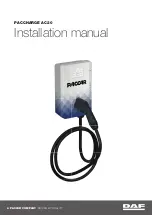
IF YOUR ENGINE OVERHEATS
In any of the following situations, you can reduce the
potential for overheating by taking the appropriate
action.
•
On highways — slow down.
•
In city traffic — while stopped, place the transmis-
sion in NEUTRAL, but do not increase engine idle
speed.
NOTE:
There are steps that you can take to slow down
an impending overheat condition:
•
If your air conditioner (A/C) is on, turn it off. The
A/C system adds heat to the engine cooling system
and turning the A/C off can help remove this heat.
•
You can also turn the temperature control to maxi-
mum heat, the mode control to floor and the blower
control to high. This allows the heater core to act as a
supplement to the radiator and aids in removing heat
from the engine cooling system.
WARNING!
You or others can be badly burned by hot engine
coolant (antifreeze) or steam from your radiator. If
you see or hear steam coming from under the hood,
do not open the hood until the radiator has had time
to cool. Never try to open a cooling system pressure
cap when the radiator or coolant bottle is hot.
CAUTION!
Driving with a hot cooling system could damage
your vehicle. If the temperature gauge reads 240°F
(116°C) or greater pull over and stop the vehicle.
Idle the vehicle with the air conditioner turned off
until the coolant temperature drops back into the
normal range 200–230°F (93–110°C). The digital
warning light may switch on (together with a mes-
sage on the instrument cluster display) to indicate
that the coolant temperature is too high; in this case,
stop the engine and call for service.
7
IN CASE OF EMERGENCY 191
Summary of Contents for 4C SPIDER 2018
Page 4: ......
Page 11: ...REAR VIEW Rear View 1 Rear Lights 2 Decklid 2 GRAPHICAL TABLE OF CONTENTS 9...
Page 14: ......
Page 62: ......
Page 64: ...INSTRUMENT CLUSTER Instrument Cluster 62 GETTING TO KNOW YOUR INSTRUMENT PANEL...
Page 90: ......
Page 138: ......
Page 198: ......
Page 281: ...INDEX 12...
















































